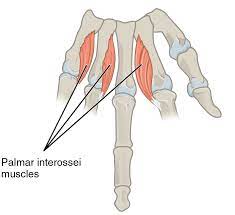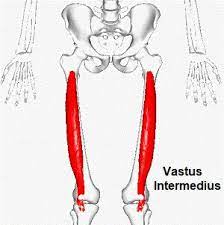Palmar interossei muscle exercise
Table of Contents
General information
The palmar interossei muscles are a group of muscles located in the palm of the hand. They play an important role in hand function and are responsible for various movements and actions involving the fingers. Strengthening these muscles can improve grip strength, finger dexterity, and overall hand coordination.
Information
- Palmar interossei are the skeletal muscles of the hand that are accountable for the motion of the fingers.
- Injury to the palmar interossei most frequently takes place because of overuse, namely typing for many hours.
- Inflammation of the muscles occurs, making it hard or painful to shake hands, type, or wiggle the digits.
- To inform if the muscles are damaged, squeeze the metacarpal bones.
- If no pain happens, there is no injury or inflammation.
- Pain relievers, such as NSAIDs, will help to overcome inflammation and discomfort. The other treatments involve massaging the injured muscles and rest.
Origin
Sides of metacarpals facing midline.
Insertion
Bases of proximal phalanges.
Extensor expansions.
Function
- Adduction of fingers.
- Flexion of MCP Joint.
- Extension of interphalangeal joints.
Nerve supply
Deep branch of the ulnar nerve.
Blood supply
Palmar metacarpal artery of the profound palmar arch.
Palmar interossei exercises
Here are a few exercises you can try to target the palmar interossei muscles:
Hand grippers
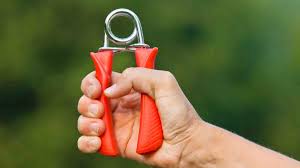
- Start with choosing a hand gripper that is at a challenging level.
- Put the gripper in the hand and squeeze it all together, maintain it for 10 seconds, and release.
- Do 15 repetitions for 5 sets in each hand.
- To make the exercise more challenging, squeeze the gripper jointly and hold it for as long as possible.
The Hang

- Start with wide arms.
- Take the pull-up bar and hang it for 2 minutes at a time if possible.
- Do it a further 5 times a day.
- If not challenging adequately, try to hang with only the fingertips.
The fingertip push-up
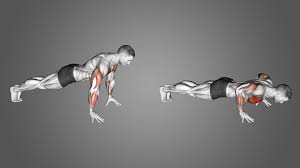
- Place the hands under the shoulders and raise the upper body off the floor while holding the legs straight and on the toes.
- If the toes are too tough, sit on the knees and check that the body is in the proper posture.
- Lift the palms off the floor until the fingers support the body.
- Get the body down towards the bottom and push up to keep the starting posture.
- Perform twelve repetitions for three sets.
- This workout should be done 5 times a week.
Isometric finger adduction (palmar interossei)
- Start with sitting upright in a chair.
- Put the injured affected arm on a table with the palm facing down and the fingers flat.
- Put a finger from the uninvolved hand on the side of the finger that is closest to the middle finger.
- Try to move the affected finger towards the middle finger, using the opposite hand to resist the motion.
- Remember to keep the palm and forearm flat on the table during the exercise.
Finger curl

- When doing the finger curl exercise, an individual can find it easier to rest their elbow on a table.
- They should then obey the stages below.
- Begin with the palm facing the body.
- Clench the hand into a loose fist.
- Gently uncurl the thumb and fingers until they are all fully straightened.
- Hold for 5 seconds.
- Bend the digits and thumb prior into a loose fist.
- Curl and uncurl the thumb and fingers 20 times.
The bent finger
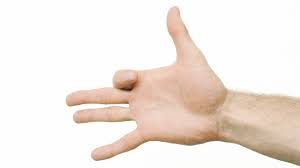
- Flex the thumb inward toward the palm until it touches the tip of the first finger.
- Hold for 20 seconds.
- Do it further on the exercise on the middle, ring, and little finger.
- An individual should repeat the exercise 5 to 7 times per day.
The ball squeeze
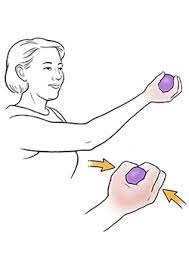
- To do the movement, hold a small ball in the palm and slowly apply pressure to the ball with the fingertips.
- A person may maintain the thumb muscle further by applying extra force.
- An individual should perform the exercise 5 to 7 times per day.
FAQ
To start with choosing, a hand gripper that is at a challenging level. Keep the gripper in the hand and squeeze it jointly, keep it for some time, and free it. Do the 10 repetitions for 5 sets in each hand. To make the exercise more challenging, press the gripper jointly and hold it for as long as possible.
PI muscles are more undersized than the DI and are located on the palmar surface of the hand in the middle of the metacarpal bones. The 1st palmar interosseous courses in the middle of the 1st dorsal interosseous posteriorly and the oblique head of adductor pollicis anteriorly.
By gradually squeezing the hands, or by limited adduction and abduction of the digits, injury may be tested. Treatment includes friction or massage therapy.
PI is created by four muscles that connect to the 1st, 2nd, 4th, and 5th digits, of which the one on the 1st finger is occasionally elementary. The third finger does not contain a palmar interosseous muscle.
Interosseous atrophy is identified by the reverse angulation of the MCP joints. It is mainly caused by injury to the neural supply, particularly the ulnar nerve, resulting in motor and sensory loss.

